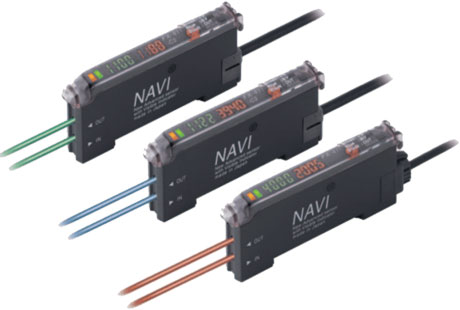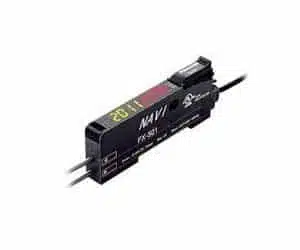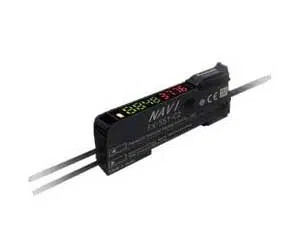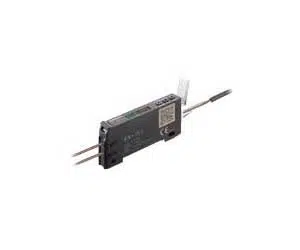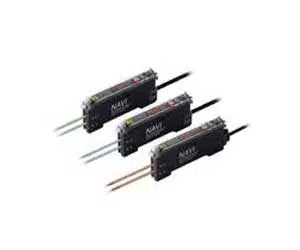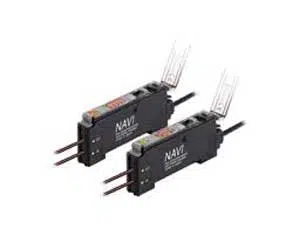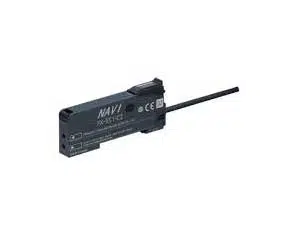Panasonic Fiber Optic Sensor: Digital Fiber Sensors
Looking for a Panasonic Fiber Optic Sensor? IndMALL Automation has what you need! We stock a wide selection, including the Digital Fiber Sensor models like FX-500, FX-550, FX-100, and FX-410. When it comes to Panasonic Fiber Optic solutions, our prices are often better than authorized dealers. Come see why many choose us for their Fiber Optic Sensor Panasonic needs.
Panasonic Fiber Optic Sensor FX-500
The Panasonic Fiber Optic Sensor FX 500 features excellent visibility and user-friendly keys. Its unmatched stability outperforms standard fibers. The sensor guarantees precise detection and minimal hysteresis, complemented by a wide-angle flat display for clear viewing.
FX-500
Panasonic Fiber Optic: FX-550
The Panasonic Fiber Optic FX-550 offers an extended sensing range, achieving up to 1.6 times more coverage than usual. This model emphasizes user-centric features, making beam axis alignment simple and effortless.
FX-550
Fiber Optic Sensor Panasonic: FX-100
The Fiber Optic Sensor Panasonic FX-100 features a distinct dual digital display. With the ability to use standard connectors, it reduces lead times and spare parts. This sensor ensures long-term stability and its setup process is streamlined and user-friendly.
FX-100
Panasonic Fiber Sensor: FX-410
The Panasonic Fiber Sensor FX-410 showcases both incident light intensity and threshold values on its display. Its user-friendly operating panel ensures uniform adjustments, irrespective of the operator. Moreover, modifying threshold values is made effortless.
FX-410
Panasonic Digital Fiber Sensor: FX-300
The Panasonic Digital Fiber Sensor FX-300 provides a diverse selection of fiber optics choices, from injection-molded bending protection fibers to lateral and V-optics. Additionally, its inclusion of cross-section converters and attachment lenses amplifies its range and accuracy potential.
FX-300
Digital Fiber Sensor FX-550L
The Digital Fiber Sensor FX-550L streamlines data analysis, marking a step forward in IoT integration. This model offers a sensing range 1.6 times larger than typical, a tripling from past versions. Moreover, it boasts a user-friendly adjuster for ease of use.
FX-550L
People Also Ask
What is a fiber optic sensor?
A fiber optic sensor is a special kind of tool that helps us detect things using light.
It works by sending light through a very thin, flexible, and transparent wire called an optical fiber.
When something happens, like temperature change or pressure, it affects the light traveling in the fiber.
A sensor at the end of the fiber detects these changes, helping us measure and monitor various things.
These sensors are super useful in many fields like medicine, industry, and even in your home.
They’re precise, fast, and can work in places where regular sensors can’t.
How do fiber optic sensors work?
Fiber optic sensors work by using light to detect changes in the environment.
They send light through a thin optical fiber, like a tiny, flexible tube.
When something changes, like temperature or pressure, it affects the light inside the fiber.
A special sensor at the end of the fiber detects these changes in the light.
These changes are then turned into useful information for measuring and monitoring things.
What are the types of fiber optic sensors?
There are a few main types of fiber optic sensors used for different purposes.
Intrinsic Sensors: These are built into the optical fiber itself and directly sense changes in light.
Extrinsic Sensors: These use optical fibers to guide light to an external sensor, which detects changes.
Distributed Sensors: They can monitor changes along the entire length of the fiber, like measuring temperature along a long pipeline.
Point Sensors: These sensors focus on specific points along the fiber to detect changes.
Each type has its unique advantages and is used in various applications depending on the needs.
How accurate are fiber optic sensors?
Fiber optic sensors are highly accurate and can be measured with precision.
They’re often more accurate than traditional sensors because they use light, which is very reliable.
Accuracy can vary depending on the type and application, but generally, they’re very precise.
This makes them valuable in fields like medicine, aerospace, and industrial processes where precision matters.
Explore Panasonic Fiber Optic Sensor for IndMALL Automation Solutions.

